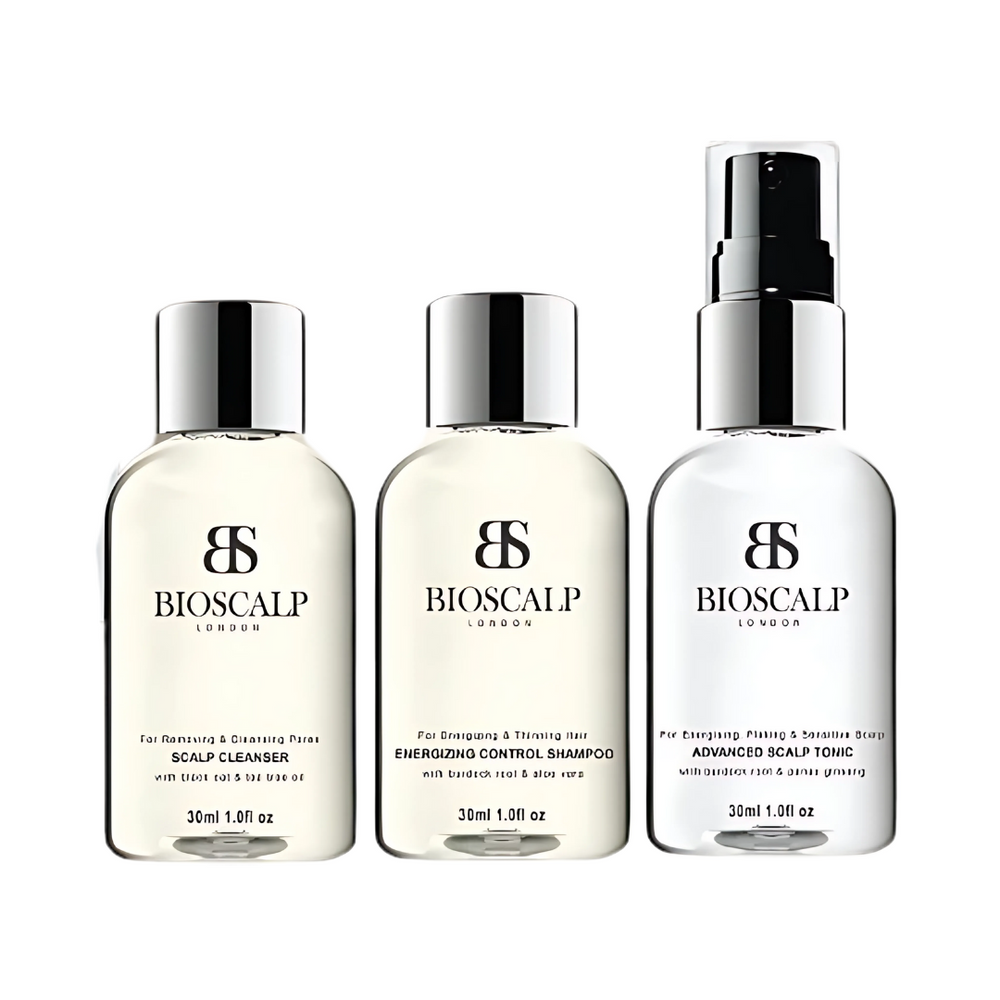What is Alopecia Areata (AA)?
Alopecia areata is an autoimmune condition that causes patchy hair loss on the scalp, face, or body. In more severe forms (alopecia totalis or universalis), nearly all or all hair may fall out. It affects about 2% of people at some point in their lives, with a strong emotional and psychological impact.

Why are JAK inhibitors changing the game?
The JAK‑STAT pathway is a key signalling system in T-cell–driven inflammation. In alopecia areata, T cells mistakenly attack hair follicles, using this pathway. Janus kinase (JAK) inhibitors can block that signal, suppressing inflammation and allowing hair to regrow.
Approved & Promising Treatments
| Drug (Generic / Brand) | Type of JAK Target | Status & Highlights | Key Results & Notes |
| Baricitinib (Olumiant) | JAK1/2 inhibitor | Approved US/EU June 2022 | In the BRAVE‑AA1 & BRAVE‑AA2 trials, ~38.8% (4 mg dose) and ~22.8% (2 mg) achieved a SALT score below 20 at 36 weeks—meaning substantial scalp coverage. Benefits persisted through extended follow-ups (~2–4 years) in ~30% of patients. |
| Ritlecitinib | Selective JAK3 (and TEC kinase) inhibitor | FDA‑approved 2023 for ≥ 25% scalp loss (age 12+) | In the ALLEGRO‑LT long‑term study over 24 months, 73.5% achieved SALT ≤ 20 and 66.4% SALT ≤ 10. Most side effects were mild: herpes zoster (1.3%), mild headaches, with 6.5% discontinuation rate. |
| Deuruxolitinib (Leqselvi) | JAK1/2 inhibitor | FDA-approved July 26, 2024 | In THRIVE‑AA1 and THRIVE‑AA2, 31% of patients on 8 mg twice daily reached SALT ≤ 20 at 24 weeks vs 0.8% on placebo. Reported improvement in patient-reported hair satisfaction and anxiety/depression scores. |
| Tofacitinib | Pan‑JAK inhibitor | Used off-label for AA | In a 66-patient trial (5 mg ×2 daily for 3 months), 32% had ≥ 50% regrowth. But all experienced relapse at a median of 8.5 weeks after stopping the drug. |
| Ruxolitinib | JAK1/2 inhibitor | Off-label or clinical trial use | Early case series reported intense hair regrowth (up to 90%+) within weeks. Yet most patients lost growth again months after stopping therapy. |
| Ifidancitinib | Selective JAK1/JAK3 next-gen inhibitor | Phase 1/2 trials underway | Laboratory studies (mice) showed robust prevention and reversal of AA, backing up reduced T‑cell inflammation and promoting “exhaustion” of disease-driving T cells (via PD‑1, TIM‑3 pathways). Human trials are still in early stages. |
Safety & Side Effects
A pooled analysis of clinical trials showed the most common side effects of JAK inhibitors include:
- Headaches, acne, elevated cholesterol, and occasionally elevated creatinine or mild anemia
- Respiratory infections, including rare cases of shingles (varicella-zoster), skin infections, tuberculosis, or Pneumocystis pneumonia (PJP) in immunosuppressed patients
Long‑term safety data for baricitinib (median 2.3 years, up to 4 years) showed consistent safety without new systemic risks, though continued monitoring is important, especially for older patients, those with heart risks, or a history of clots.
The FDA now includes a black-box warning on JAK1 inhibitors (like baricitinib and tofacitinib) for possible increased risk of serious heart-related events, cancer, blood clots, and death when used for chronic conditions in older adults.

What's New - And Why It Matters
- Multiple new options for people with moderate-to-severe AA. Baricitinib, ritlecitinib, and deuruxolitinib are now approved, allowing choices based on age, medical history, or treatment response.
- Improvement in quality of life, not just hair regrowth. Deuruxolitinib users reported better anxiety, depression, and overall hair satisfaction by 24 weeks.
- Stable efficacy over extended periods. Ritlecitinib’s 24‑month data showed durable results in most adherent patients.
- Next‑gen targeting (e.g., JAK1/3) aims to reduce unwanted side effects tied to JAK2 signalling, such as anemia or edge-on‑blood counts dysregulation.
Ongoing Challenges & Considerations
- Relapse is still common when treatment stops; regrowth may not be sustained on dosing reductions or discontinuation.
- Drug costs and insurance coverage vary by country; long-term use can become expensive.
- Side-effect monitoring (blood counts, lipids, liver, infection surveillance) is essential, especially in patients over 65 or with cardiovascular risk factors.
- Biomarkers (like ALADIN and AARSIN gene signatures) are emerging as tools to predict who will respond, and might help tailor treatment duration in the future.
Scalp‑Care Options That Complement Treatment
Oral JAK inhibitors target the immune system, but maintaining a healthy scalp environment is also important. Some people using JAK therapy choose to support regrowth with topical products targeting thinning and hormonal sensitivity.

To view the full BioScalp range, these popular products are available in Australia via Scalp Solution:
- BioScalp DHTI Control Kit — A 3‑step anti-hair‑loss system that detoxes the scalp, blocks DHT, and nourishes roots using Capixyl™, peptides, and botanicals (magnesium, clover flower, etc.).
- BioScalp DHTI Control Shampoo — The shampoo from the kit, designed to combat hormonal thinning (DHT) with lightweight botanicals and scalp-renewing actives.
Note: These are cosmetic treatments, not medical therapies. They may support scalp health and reduce shedding but do not replace JAK inhibitors or treatments prescribed by a medical professional.
Bottom Line for People Living with AA
JAK inhibitors have ushered in a new era of treatment for alopecia areata, offering the first FDA‑approved systemic choices with strong evidence for significant regrowth and quality-of-life improvements. At the same time, careful medical supervision is vital: ongoing safety monitoring, managing relapse, and choosing the right drug/duration requires partnership between patient and physician. Treatment decisions are increasingly personalised, and long-term sustained control remains an active area of medical research.
Disclaimer: This article is provided for educational purposes only. It is not a substitute for professional medical advice, diagnosis, or treatment. Always consult a qualified healthcare provider before starting or changing any treatment.








